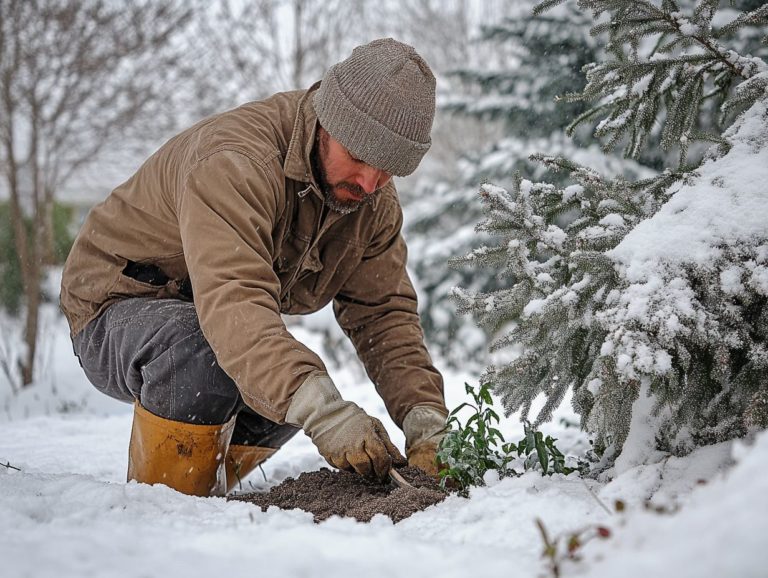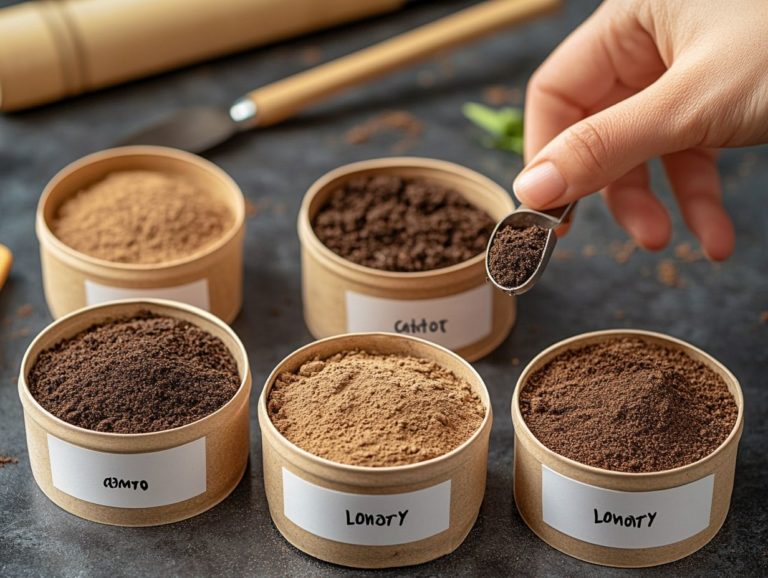How to Amend Soil for Cold Climates
Cold climates bring distinct challenges to soil health, significantly affecting plant growth and agricultural practices, especially in regions like Wyoming and Alaska.
Grasping the complexities of soil composition in these regions is crucial for gardeners, farmers, and environmental enthusiasts alike. This article delves into the key factors influencing soil in colder environments, highlights signs of poor soil quality, and presents effective methods for enhancement, including insights into local gardening practices.
You will also discover the best amendments to utilize and receive valuable tips for maintaining healthy soil, ensuring successful planting even in the most unforgiving conditions, particularly when considering frost dates.
Join in as we unveil the secrets to cultivating thriving soil in chilly climates, from using compost piles to understanding garden zones.
Contents
- Key Takeaways:
- Understanding Soil Composition in Cold Climates
- Signs of Poor Soil in Cold Climates
- Identifying Soil Issues
- Top Techniques to Supercharge Your Soil Quality
- Choosing the Right Amendments
- Maintaining Healthy Soil in Cold Climates
- Best Practices for Planting in Cold Climate Soils
- Frequently Asked Questions
- 1. What are the best methods for amending soil in cold climates, especially for areas like Wyoming and Alaska?
- 2. Can I use store-bought soil amendments for cold climates, available at places like Home Depot or Lowes?
- 3. When is the best time to amend soil for a cold climate, particularly before Memorial Day?
- 4. Is it necessary to amend soil for cold climates every year for the conditions found in the Rocky Mountains?
- 5. Can I use manure as a soil amendment for cold climates, and how does it compare to using Austrian Pines as mulch?
- 6. What are some common mistakes to avoid when amending soil for cold climates, particularly when growing Ponderosa Pines or fruit-bearing plants like Honey Currant Jam?
Key Takeaways:
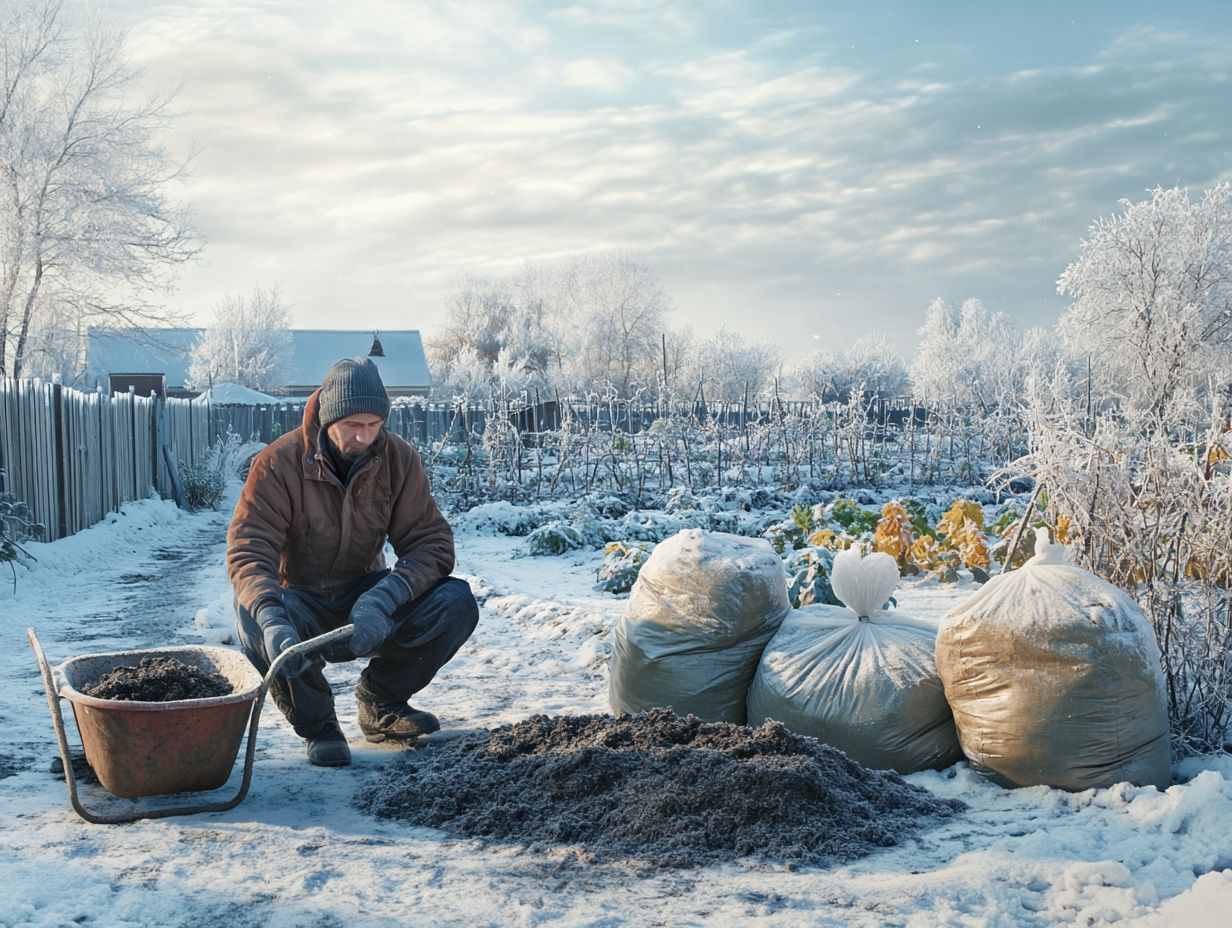
- Protect your soil in cold climates by understanding its composition.
- Identify signs of poor soil and improve quality for better plant growth.
- Choose the right amendments and planting techniques for long-term health.
Understanding Soil Composition in Cold Climates
Understanding soil composition in cold climates is crucial for your gardening success, particularly in regions like Wyoming and Alaska. Frost dates can significantly influence plant maturity and growth.
Soils in these areas have unique traits. They require careful testing and management to ensure nutrients remain accessible for your plants throughout the growing season. This is especially important around Memorial Day, when many gardeners start planting.
Incorporating organic matter is vital, as it enhances soil quality and structure. This practice is essential for anyone engaged in local gardening, especially when learning how to build a soil profile for cold climates, in these challenging, frigid environments.
Factors that Affect Soil in Cold Climates
Several factors play a crucial role in determining soil health in cold climates, including the presence of winter weeds and how snow cover impacts moisture levels, which affects the growth of heirloom seeds.
In regions like the Rocky Mountains, temperature swings can be unpredictable. Freeze-thaw cycles, when freezing and thawing repeatedly changes soil structure, can quickly lead to soil erosion, putting your plants at risk!
These conditions contribute to soil erosion and lead to compaction, making it challenging for the soil to maintain its structure. For you, moisture retention becomes paramount, as the interplay between snowmelt and rainfall directly influences nutrient availability for plant growth and the health of vegetable plants.
Snow accumulation acts as an insulator, enhancing microbial activity during winter. However, extended coverage can hinder the soil’s ability to effectively absorb moisture come springtime, particularly in greenhouses and raised beds.
Get to know these climatic influences to boost your gardening success and navigate effective land management and agricultural practices in such demanding environments.
Signs of Poor Soil in Cold Climates
Recognizing the signs of poor soil in cold climates is essential for your gardening success, particularly the management of soil nutrients. These indicators can significantly hinder your ability to achieve optimal growth and yield, especially for specific crops like the Honey Currant and the currant bush.
Common red flags include poor drainage, compacted soil, and a lack of organic matter. All of these conditions can lead to nutrient deficiencies that restrict the flourishing of heirloom seeds in cold climate soils.
By familiarizing yourself with these signs, you can take proactive steps such as soil testing and implementing amending techniques to enhance soil quality and foster the healthy maturity of your plants.
Identifying Soil Issues
To identify soil issues in cold climates, observe closely and test the soil regularly to assess its composition and nutrient availability. This is vital for maintaining a healthy garden.
Be vigilant about visual indicators such as color variations and compacted areas. These may hint at drainage problems or nutrient deficiencies that could impact your vegetable plants. For a deeper understanding, consider using simple tools that measure how acidic or alkaline your soil is, or send soil samples to labs for comprehensive analysis. You can find these testing supplies at retailers like Home Depot or Lowe’s.
By regularly evaluating these factors, you can make informed decisions about soil amendments. Whether you need to add organic matter or fertilizers, you can enhance your plant growth potential, even in challenging conditions.
Tailoring your gardening strategies to specific soil findings could transform your garden from a struggling patch into a flourishing oasis, even during harsh winters, especially with the use of season extenders.
Top Techniques to Supercharge Your Soil Quality
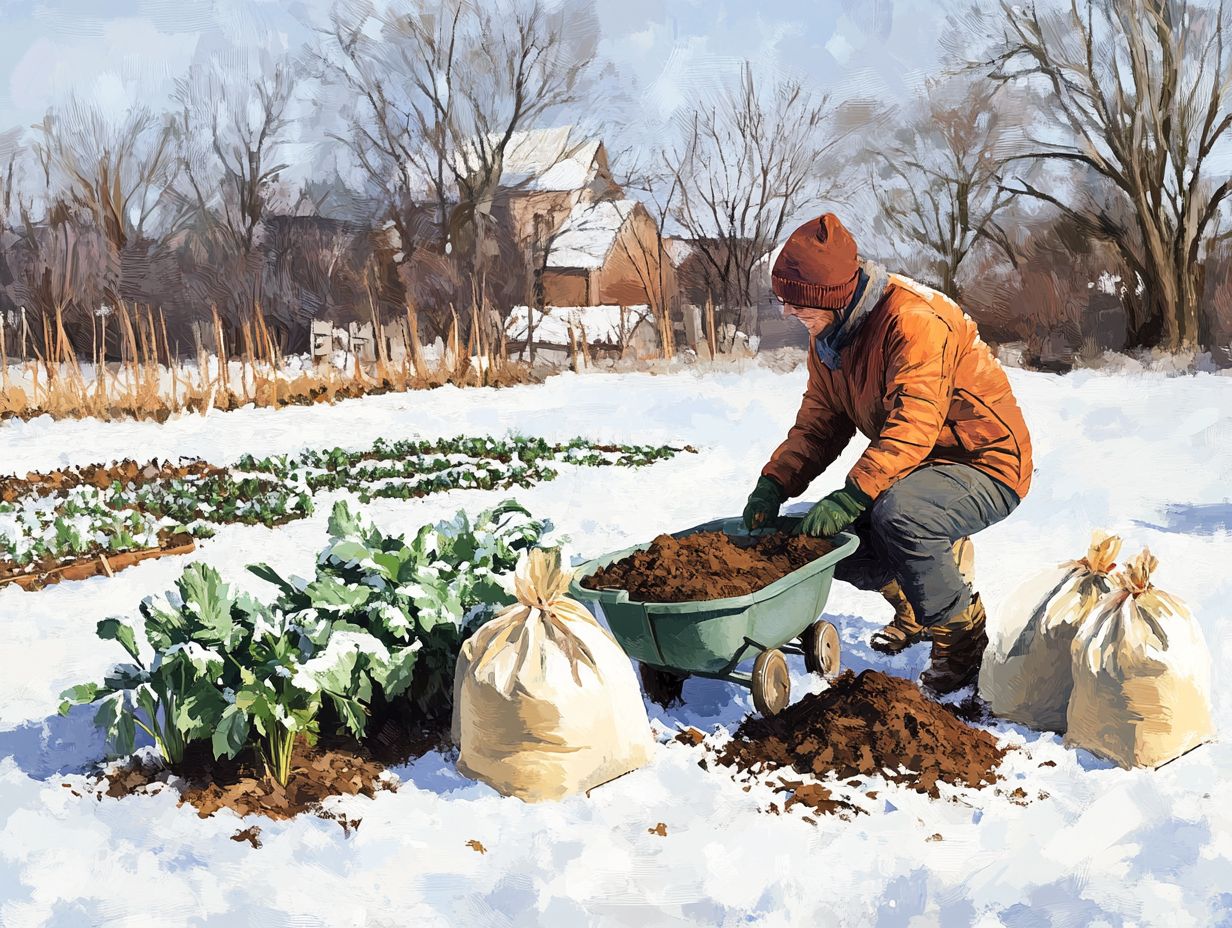
You can easily boost your soil quality with several fun and effective methods. Consider utilizing soil amendments, establishing compost piles, and employing innovative gardening techniques like raised beds.
These practices not only enrich soil nutrients but also improve drainage and aeration. These factors are essential for promoting healthy plant growth, especially when starting seeds or using season extenders such as hoop houses and cold frames.
By incorporating organic matter and conducting regular soil tests, you can create a vibrant environment for your plants, which is also crucial for healthy herb gardens.
Amending Techniques for Cold Climates
Amending techniques for cold climates involve a thoughtful approach that utilizes organic matter and targeted soil amendments to enhance soil quality, such as how to build healthy soil in cold climates.
In these regions, incorporating materials like compost can significantly boost nutrient content and improve soil structure, which is especially important for planting heirloom seeds. Additionally, peat moss offers excellent moisture retention that is crucial for plant survival during biting winter months. Adding lime can help balance pH levels, creating optimal conditions for vigorous plant growth, essential for any successful garden zone.
When managing these soil amendments in harsh winter conditions, consider factors like drainage to avoid waterlogged soils. Pay attention to the timing of application to maximize benefits come spring, particularly in greenhouses and cold frames. For more insights, check out what to know about soil fertility in cold climates. By employing these strategies, you can cultivate a resilient growing environment that flourishes despite winter’s challenges.
Choosing the Right Amendments
Selecting the appropriate soil amendments for cold climates requires a nuanced understanding of your garden’s unique needs and the diverse soil types that can differ significantly across various garden zones. This is especially important when understanding soil needs for cold-climate plants, particularly the USDA Plant Hardiness Map.
This careful consideration ensures your garden thrives even under the most challenging conditions, whether you’re utilizing compost or planting in raised beds.
Types of Amendments and Their Uses
There are several types of amendments you can use to enhance soil quality. These include compost, organic fertilizers, and mineral amendments that boost soil nutrients.
Each option plays a unique role in revitalizing your ground, especially in colder climates. Here, soil can become compacted and nutrient-poor during winter.
Compost enriches your soil with organic matter and improves water retention, which is vital for your plants during dry spells.
Organic fertilizers come from natural materials like animal manure or bone meal. They release nutrients slowly, keeping your crops nourished throughout the growing season.
Mineral amendments, such as lime or gypsum, correct pH imbalances (the measure of acidity or alkalinity in soil) and enhance soil structure. They are essential in areas prone to seasonal freezes that disrupt soil health.
Choosing the right amendments allows you to cultivate a thriving garden, even in harsh weather conditions.
Maintaining Healthy Soil in Cold Climates
Maintaining healthy soil in cold climates requires your consistent effort and attention. You must ensure that the right balance of soil nutrients and organic matter is upheld year-round, and consider overcoming soil compaction to aid in effective garden maintenance.
This dedication cultivates a thriving environment for your plants, regardless of the chill in the air.
Tips for Long-Term Soil Health
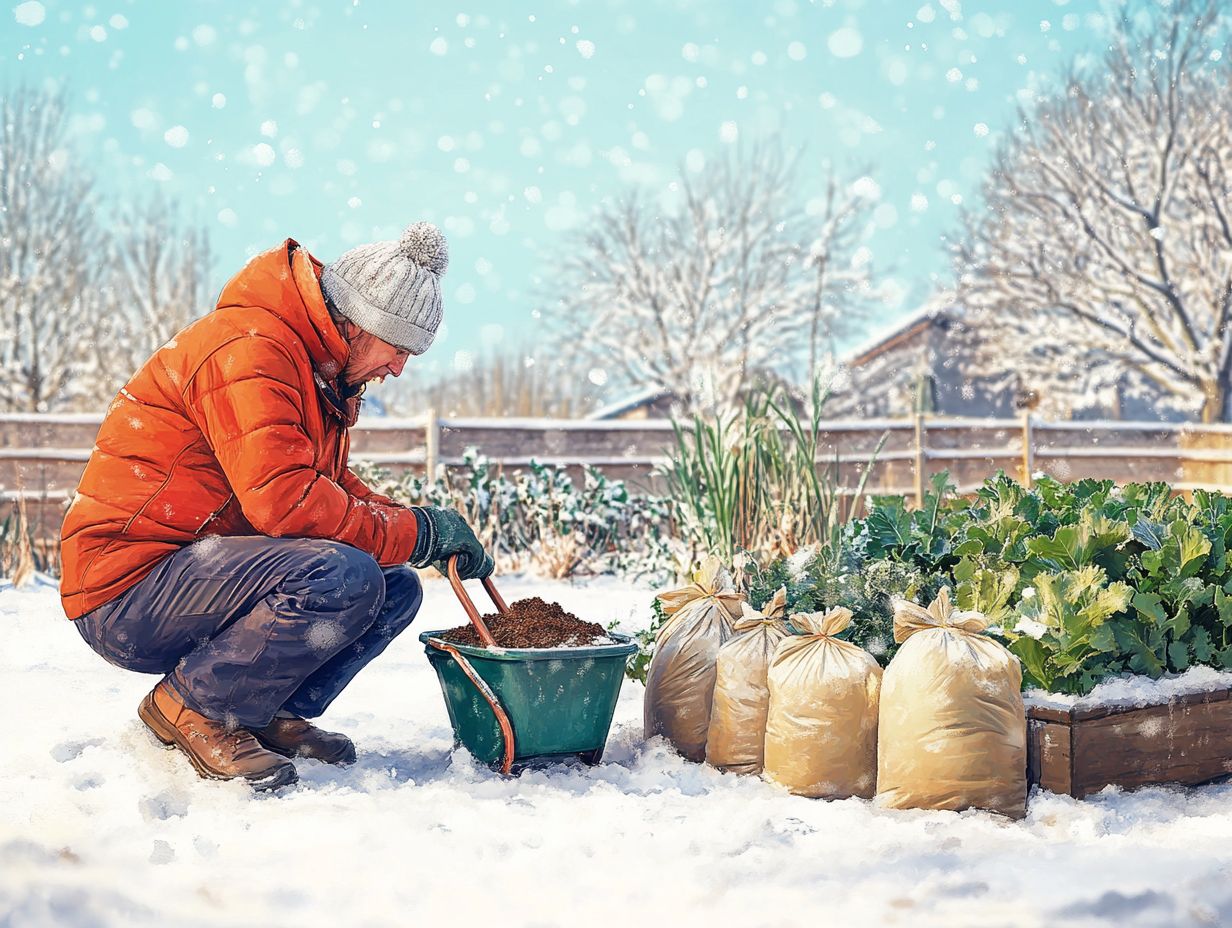
To ensure long-term soil health, adopt best practices that promote organic matter retention and recycle nutrients, especially if you’re gardening in colder climates. Utilizing cover crops can also be beneficial.
Integrating techniques like crop rotation significantly reduces pest populations and enhances soil structure. This is crucial when you have shorter growing seasons.
By incorporating compost into your garden, you boost nutrient levels and stimulate microbial activity, creating a thriving ecosystem essential for robust plant health and preventing soil challenges.
Implementing cover crops during the off-season protects your soil from erosion while contributing vital nutrients. This makes your gardening process more sustainable and productive, especially when planning your planting strategy.
Best Practices for Planting in Cold Climate Soils
When planting in cold climate soils, employing best practices is essential. Engaging in strategic planning and utilizing season extenders like hoop houses and cold frames can significantly improve your garden’s chances of success. For more detailed guidance, consider improving soil structure for cold-weather gardens.
Start your seeds at the right time and protect young plants from harsh conditions. Consider using protective tree rows or planting alongside Austrian Pines or Ponderosa Pines for added shelter.
With these thoughtful approaches, you can cultivate a thriving garden even in the chill of winter.
Strategies for Successful Plant Growth in Cold Climates
Strategies for successful plant growth in cold climates include using raised beds and greenhouses. These methods create a more controlled environment for your plants.
By embracing these innovative techniques, you can enhance soil warmth and improve drainage, cultivating a thriving garden even when temperatures drop.
Incorporating soil amendments such as compost enriches nutrient content and aids in moisture retention, which is vital during colder months. For those gardening in cooler climates, consider the top 10 soil amendments for cold-weather gardens.
Implementing temperature management techniques, like using thermal mass in greenhouses, helps stabilize warmth, enabling earlier planting and extending your growing seasons.
Raised beds elevate root systems above frost lines, creating a more favorable environment for both delicate seedlings and established plants.
Frequently Asked Questions
1. What are the best methods for amending soil in cold climates, especially for areas like Wyoming and Alaska?
To amend soil in cold climates, the best methods include incorporating organic matter, applying compost, using cover crops, and adding mulch. For more detailed strategies, refer to soil amendments effective for cold climates. These methods improve soil structure and increase nutrient availability for plants.
2. Can I use store-bought soil amendments for cold climates, available at places like Home Depot or Lowes?
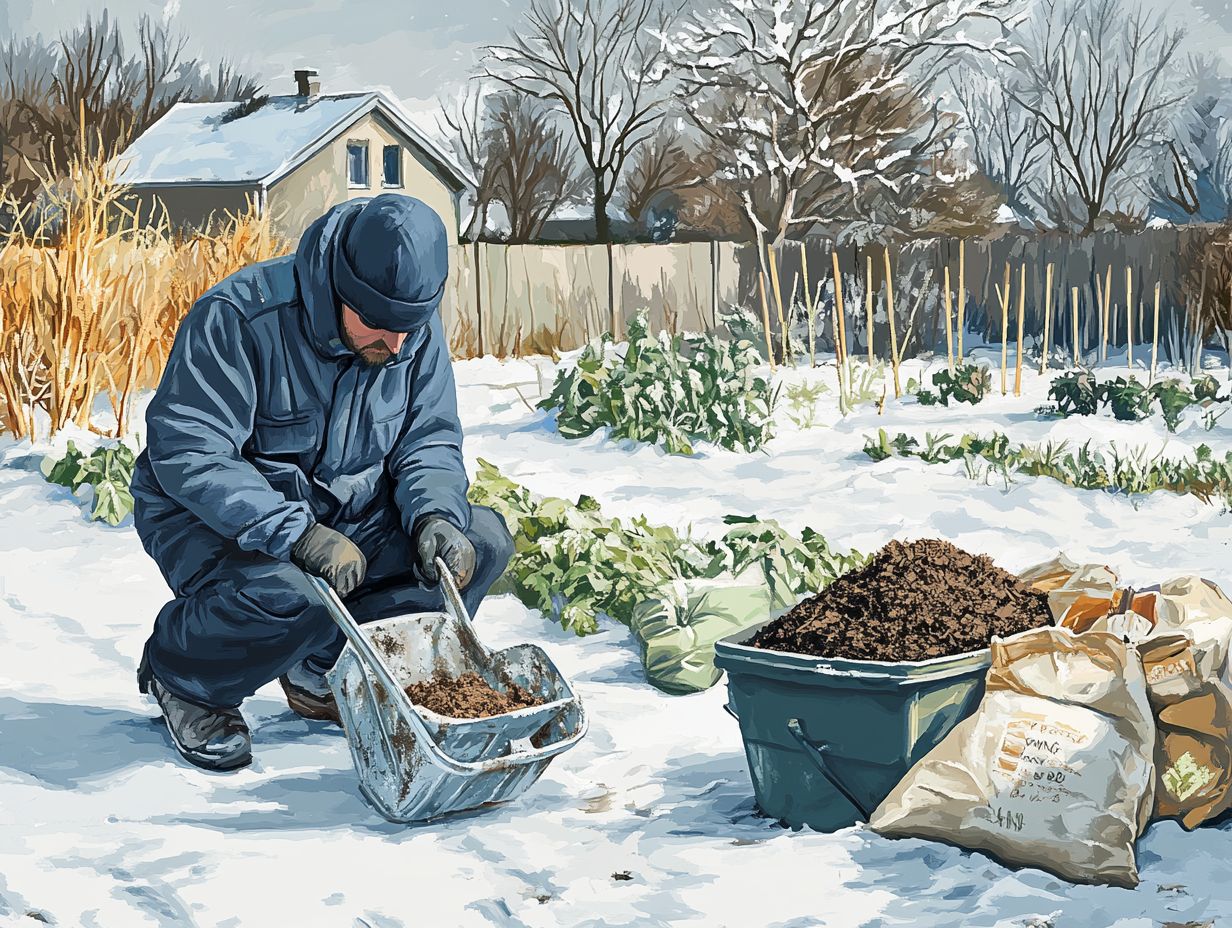
Yes, you can use store-bought soil amendments designed for cold climates. Look for products containing ingredients like decomposed plant material (compost) or lightweight materials that help retain moisture. For more detailed guidance, refer to our tips on preparing your soil for spring in cold climates. These keep your soil insulated and ready for planting.
3. When is the best time to amend soil for a cold climate, particularly before Memorial Day?
The best time to amend soil is in the fall, before the ground freezes. This timing allows the amendments to break down and enrich the soil, which is especially important for soil preparation for container gardening in cold climates, preparing it for spring planting.
4. Is it necessary to amend soil for cold climates every year for the conditions found in the Rocky Mountains?
It is not necessary to amend soil every year. If you have already enriched the soil with organic matter and compost, you may only need to do this every 2-3 years. However, if your soil is lacking nutrients, annual amendments can be beneficial.
5. Can I use manure as a soil amendment for cold climates, and how does it compare to using Austrian Pines as mulch?
Yes, manure can be an effective soil amendment. Just remember to properly compost it first to avoid burning plant roots and to reduce harmful bacteria.
6. What are some common mistakes to avoid when amending soil for cold climates, particularly when growing Ponderosa Pines or fruit-bearing plants like Honey Currant Jam?
Common mistakes include adding amendments before the ground thaws, using too much, or not mixing them deep enough into the soil. These errors can harm plant growth and soil health.
Practical Tips:
- Always check soil temperature before amending.
- Use a soil test kit to understand your soil’s nutrient needs.
- Layer mulch to protect your soil in winter.
Start amending your soil today for a thriving garden!





